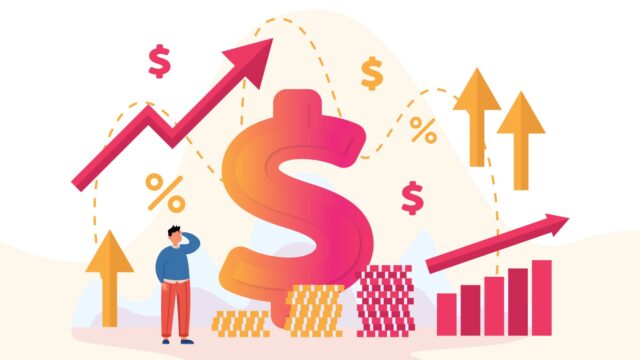The rising cost of living, the pressure your wallet is feeling
Economic prospects in the country remain bleak following a higher inflation due to a confluence of many factors including increase in food prices, the aftermath of the pandemic and the war in Ukraine.

Inflation is the increase in prices you pay for goods and services over time, where you spend
more to get the same things, eroding your purchasing power.
In Kenya, the prices for the staple commodities in the food basket are used to compute inflation
by the Kenya National Bureau of Statistics (KNBS). They include maize flour, wheat flour, Irish
potatoes, onions, tomatoes, cabbages, kale, and cooking oil among others. In the recent past,
the prices of these commodities have escalated.
What’s driving food price increases in the country?
- Food prices increased due to rainfall shortages that resulted in reduced agricultural
yields, and the aftermath of the COVID-19 pandemic. These disruptions also increased
the costs of imports to Kenya which is a net importer of food. Cereal commodities such
as wheat and rice are some of the largest food imports in terms of both volumes and
value. - The Russian invasion of Ukraine further added pressure to food prices. Russia accounts
for almost a third (32 percent) of wheat imports, making it the country’s lead supplier.
Ukraine accounts for 94 percent of soya imports. It also contributed 2 percent of wheat
and 3 percent of maize. - Another external factor is that input costs for food production went up. The country
imports most of the raw materials for animal feed manufacturing. The raw materials
include soya and sunflower, maize, wheat, rice, and sorghum. In 2021, livestock farmers
were hit by rising costs of animal feeds, attributed to shortages in raw materials such as
soya in the global markets due to the COVID-19 pandemic. - Another input cost that went up was the price of fertilizers. The rise, which started in
2021, was mainly attributed to supply chain disruptions because of the pandemic. In
recent months, the prices have been driven up even further by the Russian invasion of
Ukraine. In 2020, Russia accounted for 17 percent of fertilizer imports to Kenya.
What are the domestic factors leading to high prices of commodities? - The government raised excise duty on most commonly used household goods from
November 1, 2021. This was after the government signed a deal to secure loans from
the International Monetary Fund (IMF) as part of the pandemic relief interventions. - Additionally, production shocks due to adverse weather and rising costs of transport are
seen as contributors to the high food prices. - The Northern part of Kenya is the leading producer of beef in the country. The drought
there meant a shortage in the food supply in the country. - The increased transport costs mean adding cost to the distribution last mile, which in
most cases is passed on to consumers.
Interventions
The Central Bank of Kenya (CBK) is responsible for containing inflation. It uses the level of
interest rates to contain inflation. CBK adjusts interest rates in line with the rate of inflation and
its expected future level to contain it to the target range.
To contain inflation, CBK must keep interest rates above inflation. When the rate of inflation
accelerates, CBK’s policy response is a higher interest rate level. That’s why, on September 29,
CBK announced a sharp rise in interest rates to fight inflation. CBK raised the key lending rate
by 75 basis points to 8.25 percent, matching the Federal Reserve hike as global central banks
struggle to tame inflation.
CBK’s Monetary Policy Committee (MPC) while increasing the benchmark rate said the rising
inflation, global risks, and their impact on the domestic economy called for tightening of the
monetary policy.
“The Committee noted the sustained inflationary pressure, the elevated global risks, and their
potential impact on the domestic economy and concluded that there was scope for a tightening
of the monetary policy to further anchor inflation expectations,” CBK said in a statement.
This is the second hike by the Central Bank of Kenya this year, bringing the size of cumulative
hikes to 125 basis points. Inflation in Kenya for September was 9.2 percent outside the CBK’s
target of 2.5% – 7.5%.
“I think I have explained what informed it. The risk that the MPC saw in the sort of increase in
the inflation outcomes and also an increase in inflation expectations. So, in that sense, it was
important to deal with it. It is true it operates by increasing the cost of credit, that is sure, but I
think the issue here is, what is your number one evil? And inflation is the number one evil in
this regard,” said CBK Governor, Dr. Patrick Njoroge.
CBK has further stated that while the economy shows strong resilience, shocks from food
shortages, a weak Shilling, and imported inflation in the form of surging food prices could lead
to a spike in consumer goods prices if the liquidity is not tightened.
